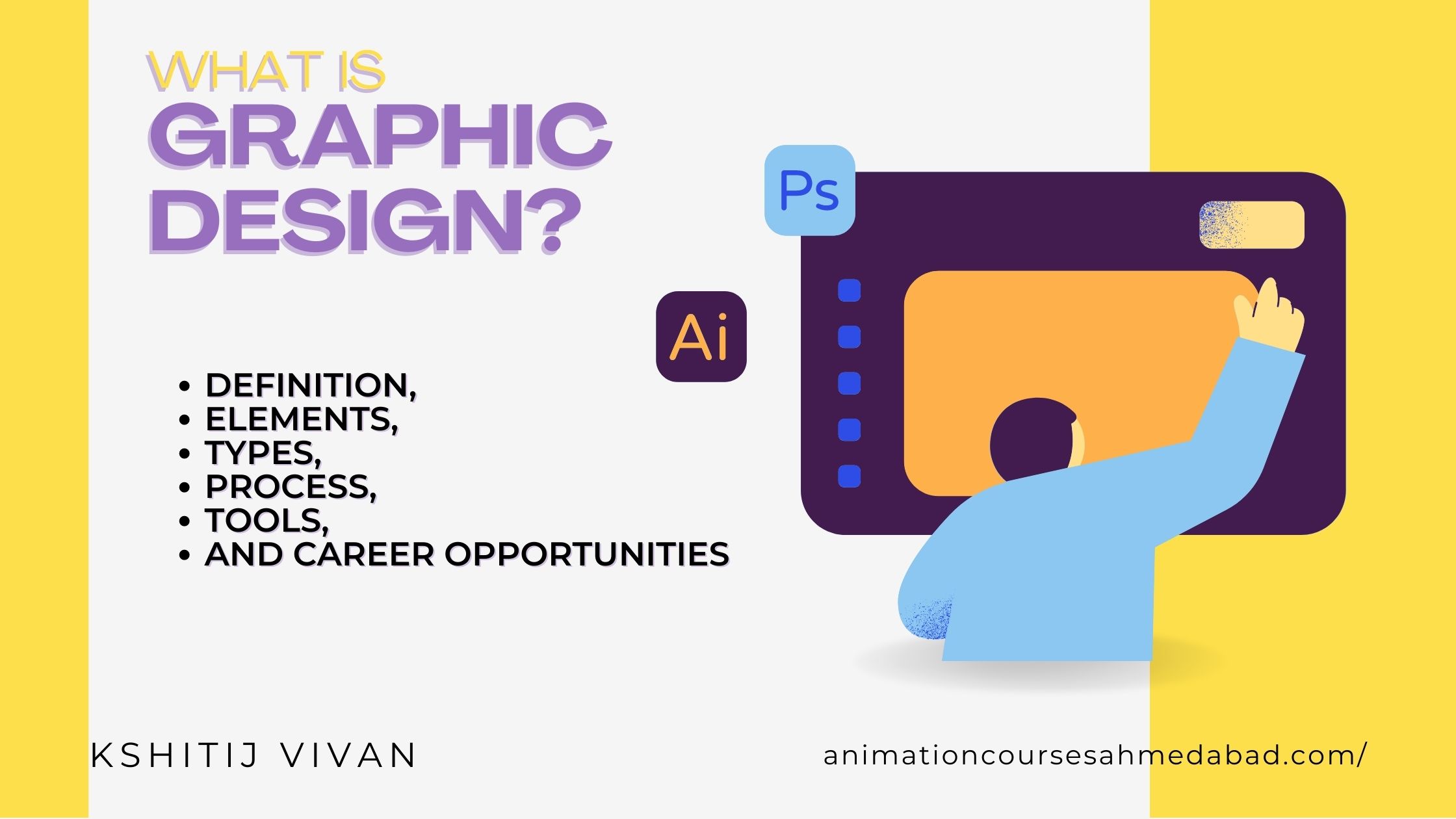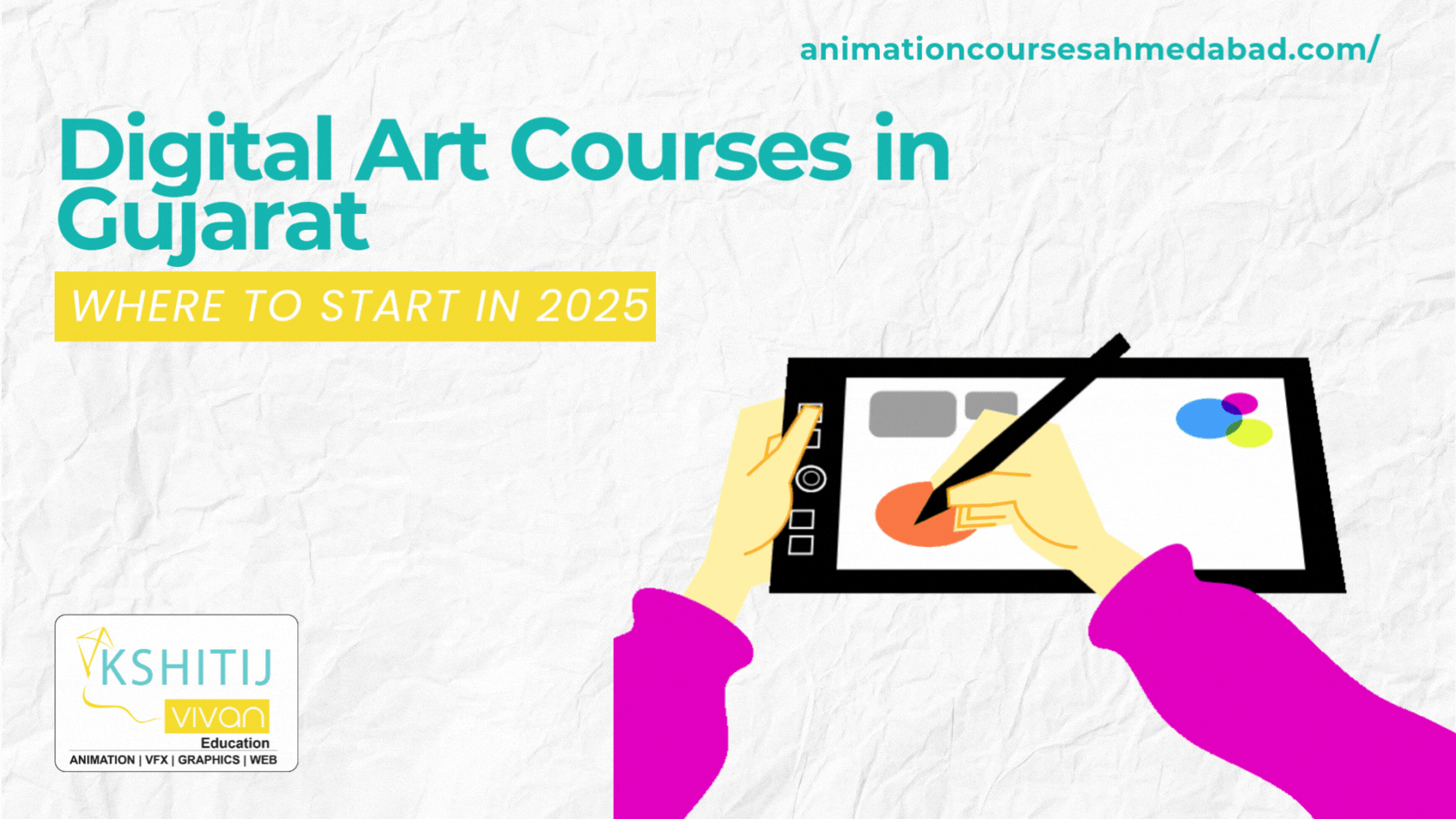
What is Graphic Design: Definition, Elements, Types, Process, Tools, Importance, Role, and Career Opportunities
Graphic design is a creative and artistic field that involves combining images, text, and other design elements to create visual communication. It is the practice of using visual content to convey a message, an idea, or a story to a specific audience.
Graphic design can be seen everywhere in our daily lives, from the logos on the products we use to the billboards on the streets.
In this blog post, we will explore what graphic design is, graphic design definition, history, elements, types, processes, graphic tools, and the importance of graphic design in business, as well as the ethics that surround this industry.
So let's start!
Definition of Graphic Design: What is graphic design?
Graphic design is the art and science of creating visual design content to communicate a message or an idea. It involves the use of typography, color, images, and other design elements to create a visual representation of information.
A graphic designer uses various design tools and software to create designs that are visually appealing, informative, and effective.
Graphic design can be used in various mediums such as print design, digital design, and motion graphics by web designers, creative directors, visual designers, and UX designers.
Graphic Design Facts:
some facts about careers in graphic design with accompanying links for further reading:
-
Employment of graphic designers is projected to grow 4 percent from 2019 to 2029, according to the Bureau of Labor Statistics:
-
The median annual wage for graphic designers was $53,380 in May 2020, according to the Bureau of Labor Statistics:
-
A degree or diploma in graphic design or a related field is typically required for entry-level positions in graphic design, according to the Bureau of Labor Statistics:
-
Graphic designers need strong visual and creative skills, an understanding of design principles and techniques, and proficiency in design software such as Adobe Creative Suite, according to the Bureau of Labor Statistics:
Sourced: https://www.bls.gov/ooh/arts-and-design/graphic-designers.htm
Freelancing can offer more flexibility in terms of working hours and the ability to choose clients and projects, but it can also require more effort in terms of finding and securing new clients.
Importance of Graphic Design:
Graphic design plays a crucial role in our lives. It helps us communicate and convey messages in an effective and visually appealing manner.
The design elements used in graphic design can create a powerful impact on the audience, making it an essential tool for marketing and advertising.
Graphic design is also important in creating brand identity, as it helps establish a unique visual identity that represents a company or organization.
History of Graphic Design:
Graphic design has a rich and complex history that dates back to ancient times. The first known example of graphic design was found in ancient cave paintings that were created by early humans.
Over the centuries, graphic design evolved, and new technologies emerged that allowed for more complex designs.
The invention of the printing design in the 15th century was a significant development in the history of graphic design, as it allowed for the mass production of printed materials.
The Industrial Revolution in the 19th century also had a significant impact on graphic design, as it brought about new materials and methods of production.
Elements of Graphic Design:
The elements of graphic design are the building blocks that designers use to create effective and visually appealing designs.
There are six primary elements of graphic design: line, shape, color, typography, texture, and space. Each of these elements plays a crucial role in creating a well-designed composition.
Line, Shape, and Form:
Lines are used to create shapes, which in turn create forms. Lines can be straight or curved, thick or thin, and can be used to create various effects in a design.
Color:
Color is a powerful design tool that can create emotions, moods, and feelings. It can be used to attract attention, highlight important information, or create contrast.
Typography:
Typography is the use of typefaces to create written content in a design. It is an essential element of graphic design, as it can affect the readability and impact of a design.
Texture:
The texture is the visual or tactile quality of a design element. It can create depth and dimension in a design and can be used to create contrast and interest.
Space:
Space is the area around, between, and within design elements. It is an important element in creating a balanced and well-designed composition.
Images:
Images are visual representations of content and can be used to communicate a message or an idea. it can be photographs, illustrations, fine art, user experience design, visual elements, or graphics.
Types of Graphic Design:
There are various types of graphic design, each with its unique characteristics and uses.
Types of graphic design:

Visual Identity:
Visual identity is using design elements to create a unique and recognizable brand identity and visual concepts for a company or organization.
Editorial Design/ Print Media Design:
Editorial design is the publication design of printed materials such as magazines, newspapers, and books. It involves layout design, typography, and image selection to create a cohesive and visually appealing publication.
Advertising Design:
Advertising design is the use of design elements to create ads that promote a product or service. It involves creating a visual communication of the product or service that will attract the target audience.
Packaging Design:
Packaging design is the use of design elements to create packaging for products. It involves creating a digital design that is visually appealing, informative, and functional for product design.
Web Design:
Web design is the design of websites and online content. It involves creating a user-friendly and visually appealing interface UX design & UI design that communicates the content effectively.
Motion graphics Design:
Motion design is the use of design elements to create animations, videos, and other types of motion graphics. It involves creating visually engaging content that communicates a message or an idea.
Process of Graphic Design:
The process of graphic design involves several stages, each of which plays a crucial role in creating an effective and visually appealing design.
Here are the main stages of the graphic design process:
Research and Analysis:
This stage involves researching the target audience, analyzing the competition, and gathering information about the project.
Sketching and Brainstorming:
This stage involves generating ideas, sketching out concepts, and brainstorming potential design solutions.
Concept Development:
This stage involves refining the initial ideas and creating a design concept that meets the project goals and requirements.
Execution:
This stage involves creating the final design, including selecting colors, typography, and other design elements.
Refinement:
This stage involves revising the design and making adjustments and improvements based on feedback and testing.
Tools and Software for Graphic Design:
Graphic designers use various graphic design software and software to create designs like Adobe Photoshop, Adobe Illustrator, and Adobe Creative Suite.
These tools can be traditional or digital, depending on the designer's preferences and the project requirements.
tools and software for graphic design:
Traditional Tools:
Pencils, paper, erasers, and other traditional tools are often used in the early stages of the design process.
Digital Tools:
Adobe Creative Suite, Adobe Creative Cloud, Sketch, Figma, and other digital design software are commonly used by graphic designers to create digital design.
Importance of Graphic Design in Business:
Graphic design plays a vital role in business, as it helps companies communicate their message effectively and create a strong brand identity.
Here are some of the key ways graphic design is important in business:
Creating a Strong Brand Identity:
Graphic design can help companies create a unique and recognizable visual identity that sets them apart from their competitors.
Communicating Messages Effectively:
Graphic design can help companies communicate their message clearly and concisely, making it easier for the target audience to understand.
Enhancing User Experience:
Graphic design can help companies create a user-friendly and visually appealing interface that enhances the user experience.
Driving Sales and Revenue:
Graphic design can help companies create effective marketing materials that attract and retain customers, ultimately leading to increased sales and revenue.
The Role of Graphic Designers
The role of graphic designers is to use their creative and graphic design technical skills to visually communicate ideas, messages, and information to a specific audience.
Graphic designers work on various projects, from creating logos and branding materials to designing packaging, websites, magazines, and advertisements.
Graphic designers are responsible for understanding the needs and preferences of their target audience and using design elements such as typography, color, images, and layout to create effective designs that convey the intended message.
They may work independently or as part of a team, collaborating with a web designer, UI designer, art director, visual designer, writers, marketers, and clients to create designs that meet specific project goals and objectives.
In addition to their technical skills, graphic designers must possess strong communication and problem-solving skills.
They must be able to interpret and understand client briefs and feedback, work within project deadlines and budgets, and adapt to changes in project scope or requirements.
They must also be able to think creatively and come up with innovative solutions to design problems.
Graphic designers must also keep up-to-date with the latest design trends and software tools and be willing to continuously learn and improve their skills.
They must also be aware of ethical considerations in design, such as avoiding plagiarism, respecting copyrights and trademarks, and creating designs that are accessible and inclusive to all audiences.
Overall, the role of graphic designers is to use their creative and technical skills to create designs that effectively communicate ideas and messages to a specific audience and help clients achieve their goals and objectives.
Balancing Creativity with Responsibility:
Graphic designers should strive to create designs that are both creative and responsible, striking a balance between the two.
Where to learn Graphic Design In Ahmedabad, Gujarat?
Learning graphic design and multimedia is way more interesting than ever before,
You can enroll in a graphic design course or program.
In Ahmedabad, many graphic design institutes offer courses for different types of graphic design.
What is a graphic design course?
A graphic design course is a type of educational program that focuses on teaching students the skills and techniques required to create visual content using design software and other tools.
These courses typically cover topics such as design theory, typography, color theory, layout, image manipulation, interactive design, and other essential skills needed to create effective designs.
Graphic design courses can be found at various levels of education, including graphic design certificate programs, diploma programs, graphic design degrees, and graduate degrees.
Some graphic design courses may focus on a specific area of design, such as web design or advertising design, while others offer a more general approach to graphic design.
Depending on the level and type of program, graphic design courses may be offered in a classroom setting or online, and they may include hands-on projects, assignments, and critiques to help graphic artist students develop their graphic design skills and gain practical experience.
Taking a graphic design course can be beneficial for individuals who are interested in pursuing a career in graphic design, as well as for those who want to enhance their skills in design for personal or professional projects.
By completing a graphic design course, students can gain a strong foundation in design principles and techniques and develop a portfolio of work that can be used to showcase their technical skills and attract potential employers or clients for graphic design jobs.
Types Of Graphic Design Courses Available & Graphic Design Courses Fees
Here is a table mentioning graphic design courses and approx fees:
|
Course Name |
Fees |
|
Post Graduate Diploma in Graphic Design |
Starting INR 10710 |
|
Advanced Diploma in Graphic Design |
INR 1,00000 (estimate) |
|
Diploma in Game Art and Design |
INR 2,23,000 |
|
Diploma in Visual Communication Design |
INR 3,00,000 |
|
Diploma in Graphic Design |
INR 35,100 |
|
Diploma in International Media Graphics Animation Program |
INR 3,54,000 |
|
Graphic Design Course after 12th |
Starting from INR 20,000 |
|
Online Graphic Design Courses |
Starting from INR 5,000 |
|
Best Graphic Design Courses in Ahmedabad |
Starting from INR 30,000 |
|
Graphic Design Diploma Courses Online |
Starting from INR 25,000 |
|
Advanced Graphic Design Courses for Professionals |
Starting from INR 50,000 |
|
Graphic Design Courses with Internship |
Starting from INR 40,000 |
|
Short-term Graphic Design Courses Online |
Starting from INR 10,000 |
|
Graphic Design Courses for Beginners |
Starting from INR 15,000 |
|
Affordable Graphic Design Courses Online |
Starting from INR 7,000 |
|
Graphic Design Courses with Industry Experts |
Starting from INR 60,000 |
You can start learning graphic design by attending a graphic design course after the 12th in Ahmedabad, India.
We, Kshitij Vivan offer the best Graphic Design Course after the 12th in Ahmedabad and around the city.
Plus we support both modes of learning, students can learn graphic design online as well and we provide offline graphic design classroom training in Ahmedabad through physical centers.
You can visit our center here:
Career Opportunity In Graphic Design
A career in graphic design can be a rewarding and fulfilling choice for individuals who are creative, detail-oriented, and have a passion for visual communication.
Graphic designers work in various industries, including advertising, marketing, publishing, and entertainment, creating designs for various projects such as websites, logos, packaging, magazines, and advertisements.
To pursue a career in graphic design, individuals typically need to have a degree or diploma in graphic design or a related field.
However, some employers may also consider candidates with a strong graphic design portfolio of work and relevant work experience.
Graphic design jobs outlook for graphic designers is positive, with the Bureau of Labor Statistics projecting a 4% growth in employment from 2019 to 2029.
However, competition for jobs can be strong, and individuals need to have a strong portfolio of work and up-to-date skills in design software and techniques.
Some of the key graphic design skills needed for a career in graphic design include proficiency in design software such as Adobe Creative Suite, strong visual and creative skills, an understanding of design principles and techniques, and the ability to communicate effectively with clients and team members.
Graphic designers may work as part of an in-house team for a company or organization, or they may work for a design agency or as a freelancer.
Check out here graphic design salary for more details.
Freelancing can offer more flexibility in terms of working hours and the ability to choose clients and projects, but it can also require more effort in terms of finding and securing new clients.
You can check out how to become a graphic designer in India.
Graphic Design Career Jobs
Here is a list of graphic design jobs roles:
-
Graphic Designer
-
Ui Ux Designer
-
Web Designer
-
Product Packaging Designer
-
Multimedia Artist
-
Motion Graphic Artist
-
Print Media Designer
Overall, a career in graphic design can offer a wide range of opportunities and a chance to use creative and technical skills to create designs that communicate ideas and messages to a specific audience.
Which Companies Employ Graphic Designers In India?
Many companies in Ahmedabad, Vadodara, Surat, and many cities of Gujarat are hiring graphic designers with different roles.
Some of them are.
-
Wipro
-
HCL Technologies
-
TATA Consultancy Services
-
Accenture
-
Amazon
-
L&T
-
Zomato
According to the Nokri portal, these companies hire graphic designers.
All you need is a graphic design portfolio to show your experience and creativity.
Conclusion:
In conclusion, graphic design is a creative and artistic field that plays a crucial role in our lives. It involves using design elements to create visual content that communicates a message or an idea to a specific audience.
Graphic design has a rich history, with roots dating back to ancient civilizations and evolving with significant developments in technology and design techniques.
Graphic design can be applied to various types of design, including visual identity, editorial design, advertising design, packaging design, web design, and motion design.
The process of graphic design involves several stages, from research and analysis to execution and refinement, and designers use various tools and software, both traditional and digital, to create their designs.
In business, graphic design is essential for creating a strong brand identity, communicating messages effectively, enhancing the user experience, and driving sales and revenue.
However, graphic designers also have a responsibility to create ethical designs that avoid misleading or harmful messages and contribute positively to society.
As we move forward, the future of graphic design will likely continue to evolve with advancements in technology and changing design trends.
However, the fundamental principles of effective graphic design, including a clear understanding of the target audience, strong design elements, and a balance of creativity and responsibility, will remain essential for creating successful designs.



